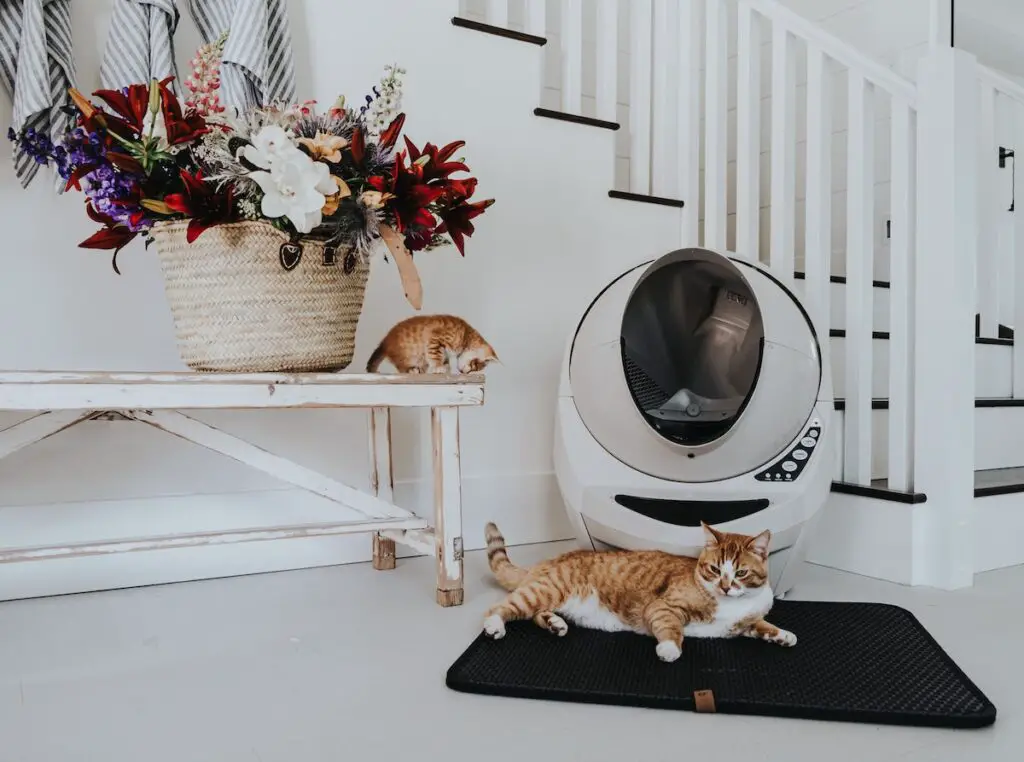Feline Idiopathic Cystitis (FIC), also known as Feline Interstitial Cystitis, is the most common form of feline lower urinary tract disease (FLUTD). Feline Idiopathic Cystitis is generally one of the most common medical issues in cats, and can cause pain and issues with peeing outside the litter box if left untreated.
Symptoms of Feline Idiopathic Cystitis
While there are different types of Feline Idiopathic Cystitis, some of the most common symptoms are:
- Peeing outside the litter box
- Blood in the urine
- Difficulty peeing, pain with peeing
- Increased frequency of urination
- Inability to urinate at all (this requires vet intervention and is very serious as it can cause death)
- Vomiting and diarrhea (less common)
- Visible distress, hiding, or lethargy
It’s important to note that you should not try to diagnose Feline Idiopathic Cystitis on your own; only a vet can do that. A vet will be able to evaluate the cat’s behavior and environment as well as conduct urine and blood tests to make an accurate diagnosis.
Severity of Feline Idiopathic Cystitis
So how do you know if your cat’s Feline Idiopathic Cystitis is mild or severe? Not all cases of Feline Idiopathic Cystitis are the same. Keep in mind that as many as 40-50% of cats will have more than one episode of Feline Idiopathic Cystitis within one year. There are four distinct levels that have differing symptoms:
- Sudden Onset – this is the mildest level. It comes on quickly a resolves quickly without intervention.
- Frequent and Reoccurring – this type comes on quickly as well and usually resolves quickly but it happens frequently, meaning it comes and goes often.
- Persistant – about 10% of all Feline Idiopathic Cystitis is this level. It comes but does not go away.
- Obstructive – about 10% of Feline Idiopathic Cystitis is obstructive and very serious. This means your cat cannot pass urine and it can be life threatening.

Types of Feline Cystitis
There are three main causes of Feline Cystitis, with Idiopathic cystitis being by far the most common.
- Bacterial cystitis: This accounts for less than 3% overall of cases of cystitis in cats, and is caused by a bacterial infection in the urinary tract. It is more common in older cats and male cats because of their longer, narrower urethra which allows bacteria to track up to the bladder more easily than in female cats.
- Fungal cystitis: This is caused by a fungal infection and is very rare. It can be caused by a variety of fungi like candida, aspergillus, cryptococcus or a number of others.
- Idiopathic cystitis: Although this accounts for the vast majority of Feline Cystitis cases, the cause remains largely unknown.
Causes of Feline Idiopathic Cystitis
Although the exact cause of Feline Idiopathic Cystitis is not clear, there are still some theories that have strong backing.
The general cause of Feline Idiopathic Cystitis is deformities in the bladder wall. When the membrane of the bladder wall is not fully intact, it becomes permeable, allowing irritants to enter the bladder and cause issues. This irritation from external particles causes inflammation and other dysfunction.
The other cause of Feline Idiopathic Cystitis is external stressors. Some cats do not deal with stress as well as others, and the increase in stress hormones can lead to dysfunction all over the body, including the bladder.
Obesity in cats has also been shown to increase the risk of Feline Idiopathic Cystitis, although the exact reason remains unknown. Some point to dry food as being a particular offender, but more research needs to be done to verify this.
Treatment of Feline Idiopathic Cystitis
In about 85% of cases your cat’s Feline Idiopathic Cystitis will go away in a matter of days without any treatment. If symptoms persist longer, though, you’ll likely need vet intervention.
Your vet will likely recommend the following treatments:
- Pain relief – gabapentin, butorphanol, buprenorphine, or non-steroidal anti-inflammatory drugs (NSAIDs).
- Anti-anxiety medication – Amitriptyline, a tricyclic antidepressant (TCA), fluoxetine, or other selective serotonin reuptake inhibitors (SSRIs), may be prescribed.
- Antibiotics – these will be prescribed only if the infection is bacterial.
- Diet changes – moist food is better than dry food at preventing and treating Feline Idiopathic Cystitis because it can help keep your cat hydrated.
- Increased water intake – increase your cat’s water intake by changing out their water bowls more regularly or buying a water fountain, which has been show to be more enticing to cat.
- Surgery – in cases of obstructive Feline Idiopathic Cystitis, surgery may be necessary to treat the issue.














